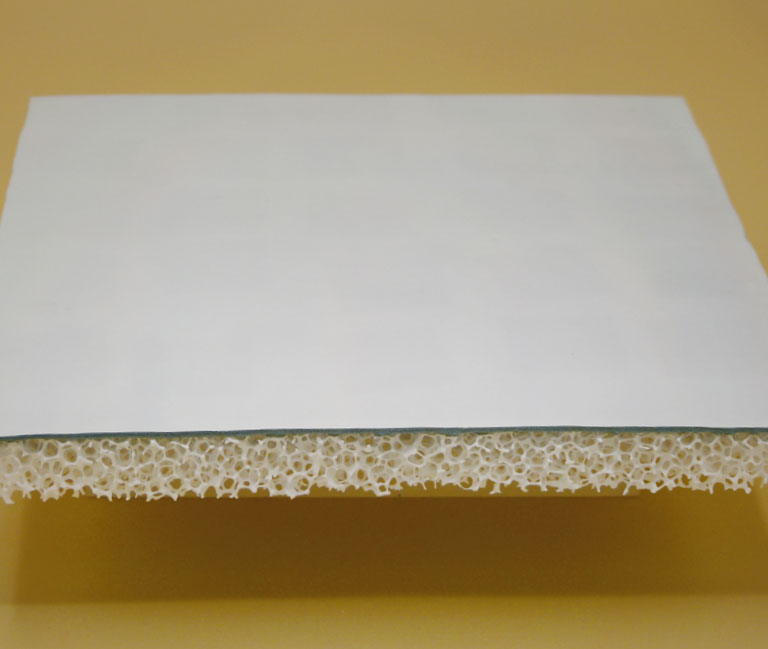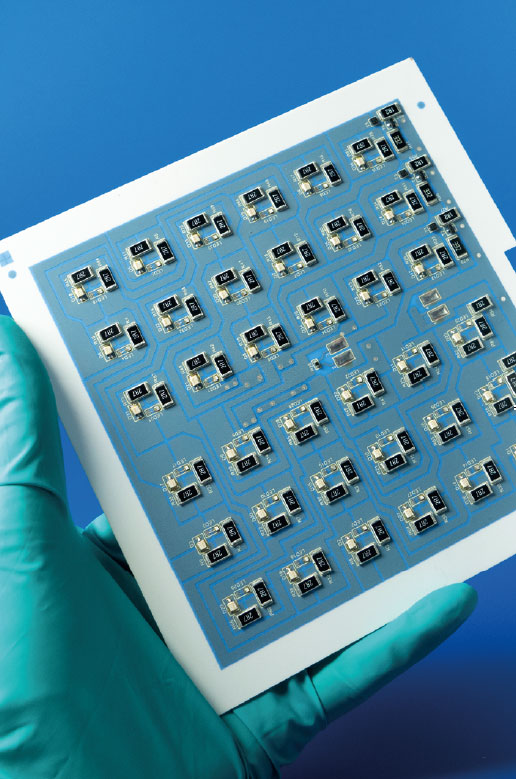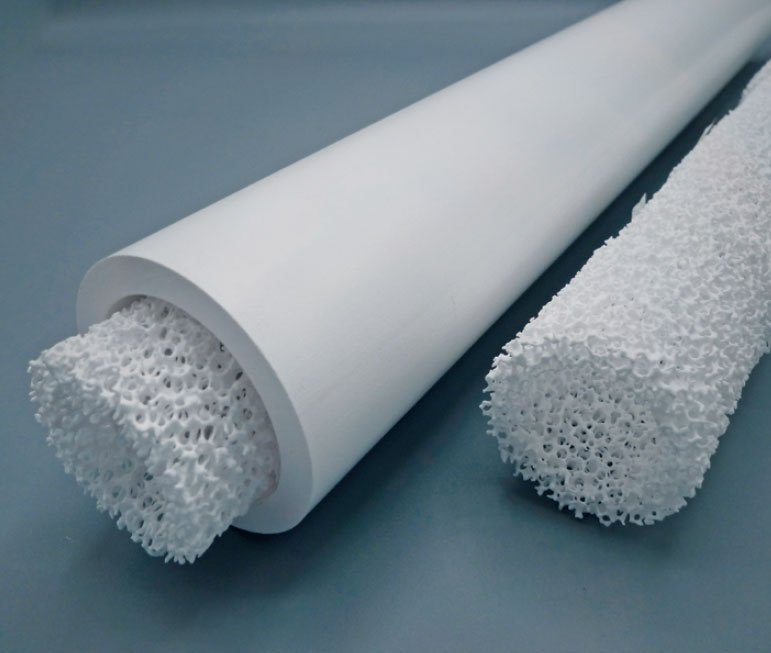
Ceramic stack systems for simultaneous filtration and photocatalytic oxidation
Current research




Persistent organic pollutants, such as veterinary and human pharmaceuticals, pesticides and industrial chemicals, typically accumulate in aquatic environments. Conventional water treatment processes are hardly able to remove them completely and without residues, which means a new generation of highly adaptable and versatile, energy- and material-efficient technologies and processes is needed to solve the issue. Such technologies must themselves rely on high-performing materials and material compounds.
Functionally hybrid treatment systems
With this in mind, Fraunhofer IKTS – together with its cooperation partners from Saxony, WTA Vogtland GmbH, Rhode + Wagner Anlagenbau GmbH, and Innotas Elektronik GmbH – is working within the project “MemPhOx” to develop functionally hybrid filtration-photocatalysis-material compound systems that can be combined into stacks. The project combines
- ceramic microfiltration membranes in planar and tubular design,
- cellular ceramic structures with photocatalytically highly effective titanium dioxide coating, and
- energy-efficient, durable and environmentally friendly UV LEDs to stimulate catalytic reactions
into stacks, which are then integrated into continuously operated treatment plants. The compact systems work completely without chemicals. They are self-cleaning and enable the separation of pollutants bound to particulates with concurrent sterile filtration. Organic trace substances are fully eliminated thanks to the oxidation taking place downstream, in the photocatalytic zone.
Energy-efficient UV LEDs
In contrast to conventional UV lamps, UV LEDs provide targeted irradiation within the defined wave range, making it possible to tailor the eliminating effect to suit the needs of the respective application. By integrating the LEDs on thermally highly conductive and long-term stable ceramic plates, the researchers managed to develop a scalable stack system that can be hermetically sealed for immersion applications.
Lab tests with model waters and municipal wastewater have confirmed that the stack system is ideal for eliminating pharmaceutical agents and pathogenic microorganisms. The modular system can be used both at the point of use, as the final treatment step before consumption, and at the point of emission, treating organically contaminated municipal and industrial wastewaters.
Services offered
- Development and characterization of highly porous/cellular ceramic materials and membranes
- Development of ceramic, hermetically sealable LED arrays for LED applications
- Application-specific process design and prototype development
- Process trials under real-life conditions, process assessment
The authors wish to express their gratitude to the European Union for its financial support (grant no. 100334866).
Sponsored by
